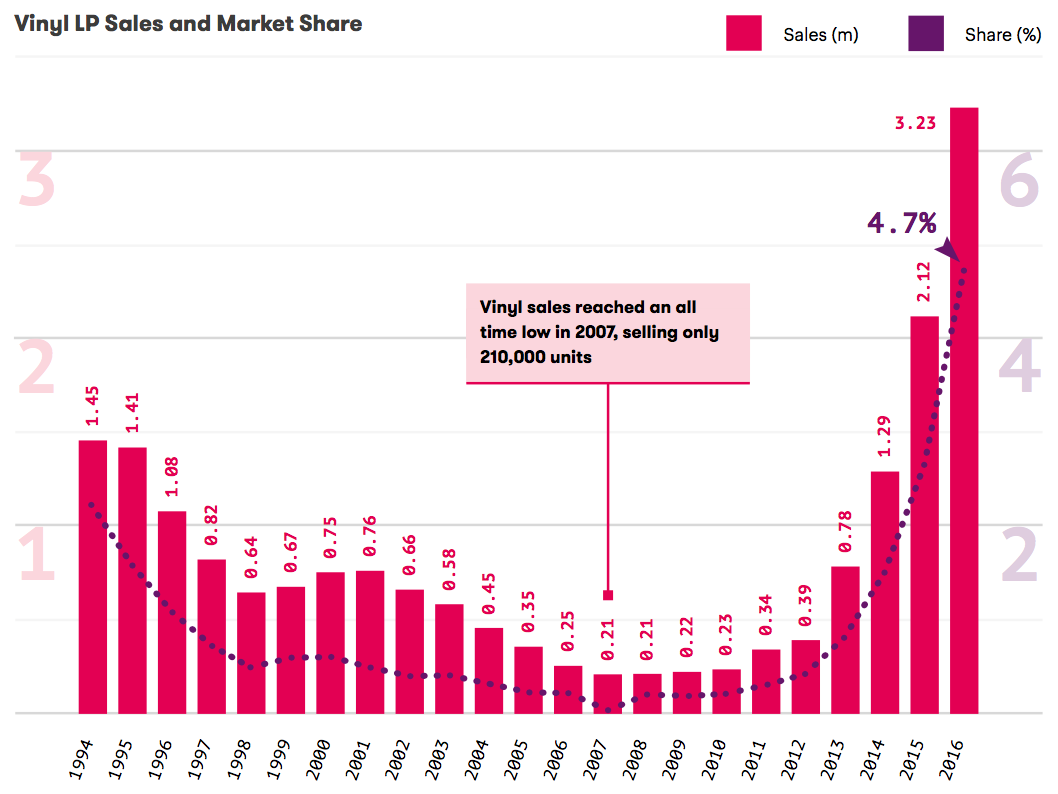Music streaming became even more popular in the UK in 2016 and vinyl records are continuing to explode in popularity, according to a new report by the BPI.
The BPI’s annual yearbook examines the size of the music market in the UK, as well as things like streaming, which formats are popular, and how British artists spread around the world.
We dug into the BPI’s annual yearbook to find the 17 most interesting charts that explain how the music industry is changing.
Unsurprisingly, digital formats are representing an increasing percentage of income from sales and streams.

Foto: source BPI
Streaming has had a big impact on album sales. CD sales are cratering, and digital album sales peaked in 2013. Vinyl records are seeing a slight increase, though.

Foto: source BPI
Here’s a look at the sale of singles. CD singles are pretty much dead, and digital singles peaked in 2012.

Foto: source BPI
Music streaming peaked in the final few weeks of 2016.

Foto: source BPI
Remember compilation albums? The rise of curated playlists means they’re becoming less popular (but their share of the album market is growing.)

Foto: source BPI
Sales of vinyl records slumped to an all time low in 2007, but they’ve been skyrocketing in popularity in recent years.
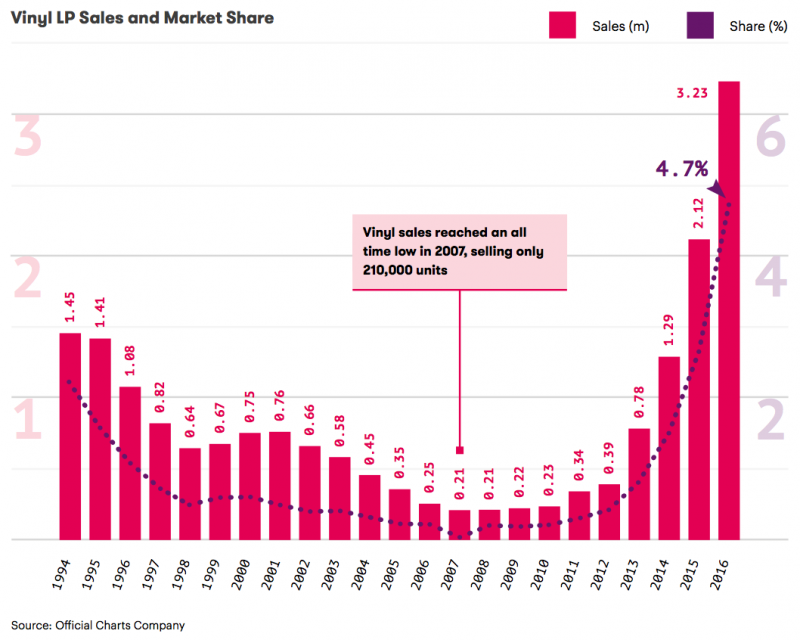
Foto: source BPI
Interestingly, most vinyl records released are older albums — not new releases.

Foto: source BPI
Male solo artists shift the most albums. Female groups sell the least amount.
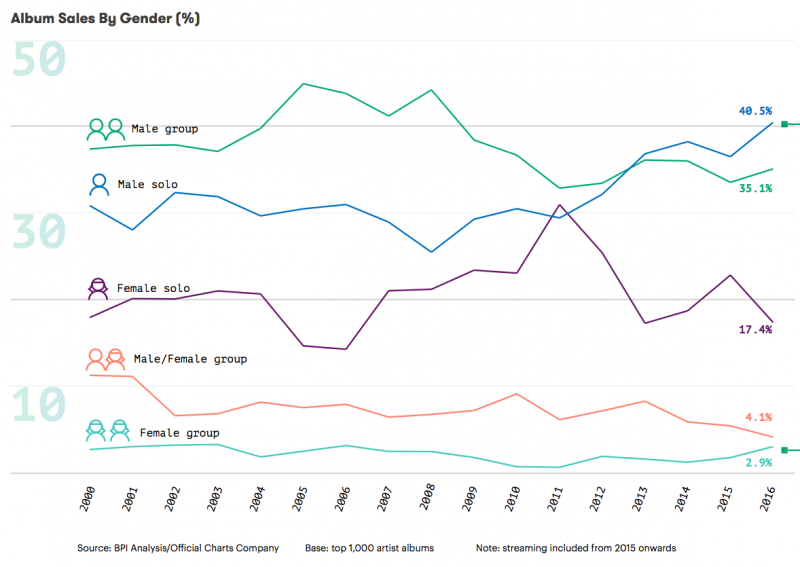
Foto: source BPI
2009 saw solo artists start to outsell groups in album sales.

Foto: source BPI
There’s been a big shift in the way we listen to music: Streaming is now far more popular than downloads.
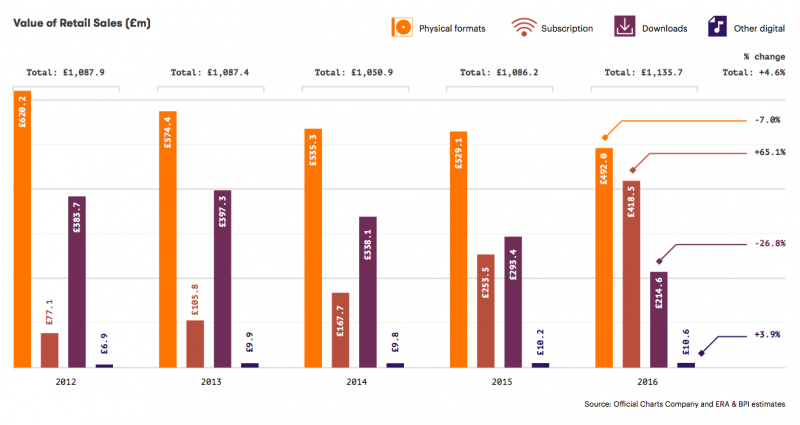
Foto: source BPI
The total number of physical stores that sell music increased in 2016.
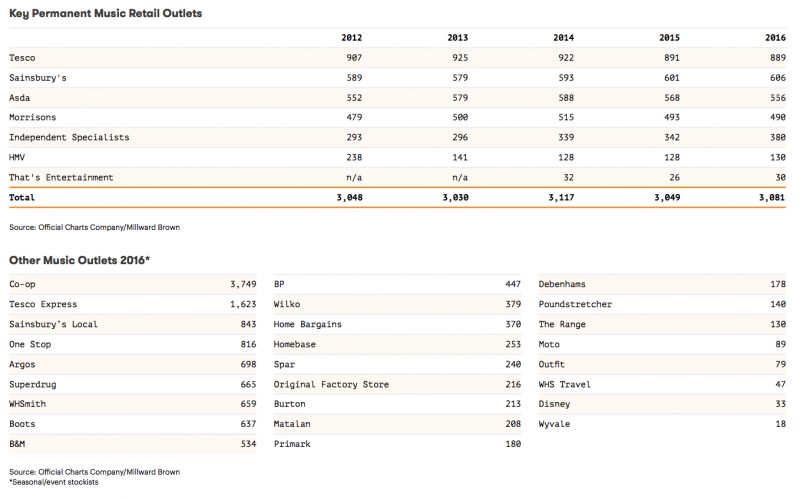
Foto: source BPI
Spotify is becoming more popular, but services like Apple Music and Deezer decreased penetration.

Foto: source BPI
CDs are becoming more expensive over time as the format becomes increasingly niche.

Foto: source BPI
How do most people listen to music? It’s still using a good, old-fashioned radio.
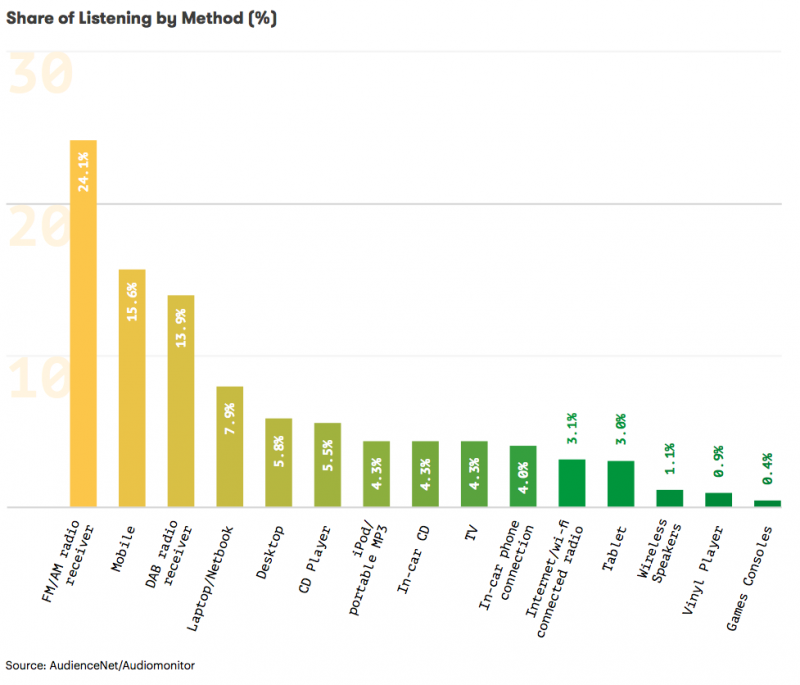
Foto: source BPI
Music streaming is now eligible for official charts. Singles have grown in their share of the charts, but albums have dropped.
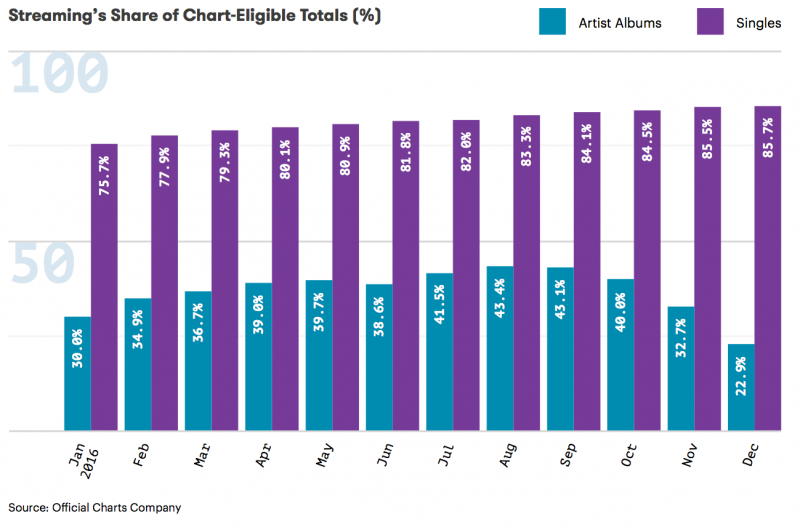
Foto: source BPI
Most people listen to their own playlists, not playlists created by a streaming platform.
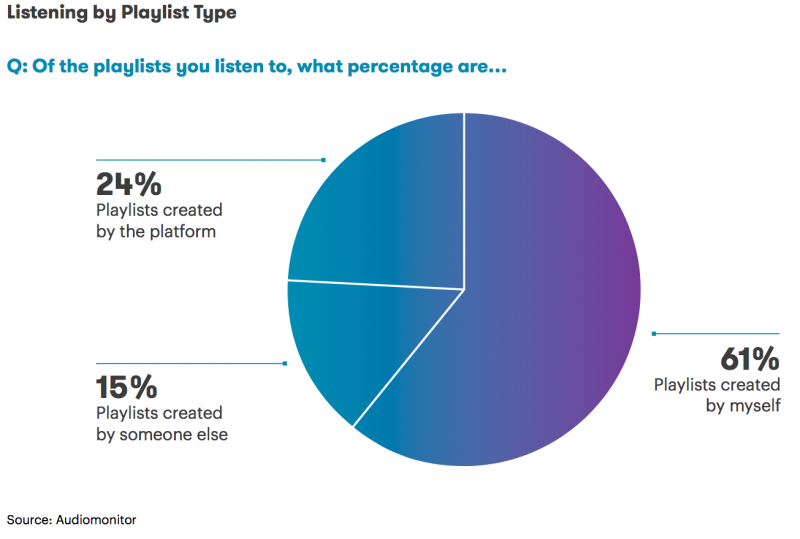
Foto: source BPI
Here’s how UK artists perform overseas. The share of sales in both Europe and the world dropped in 2016.

Foto: source BPI

